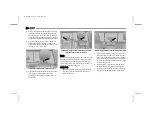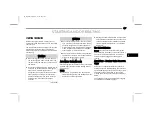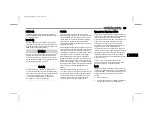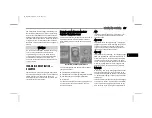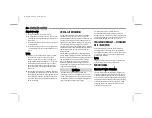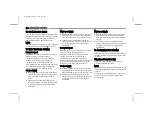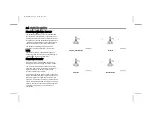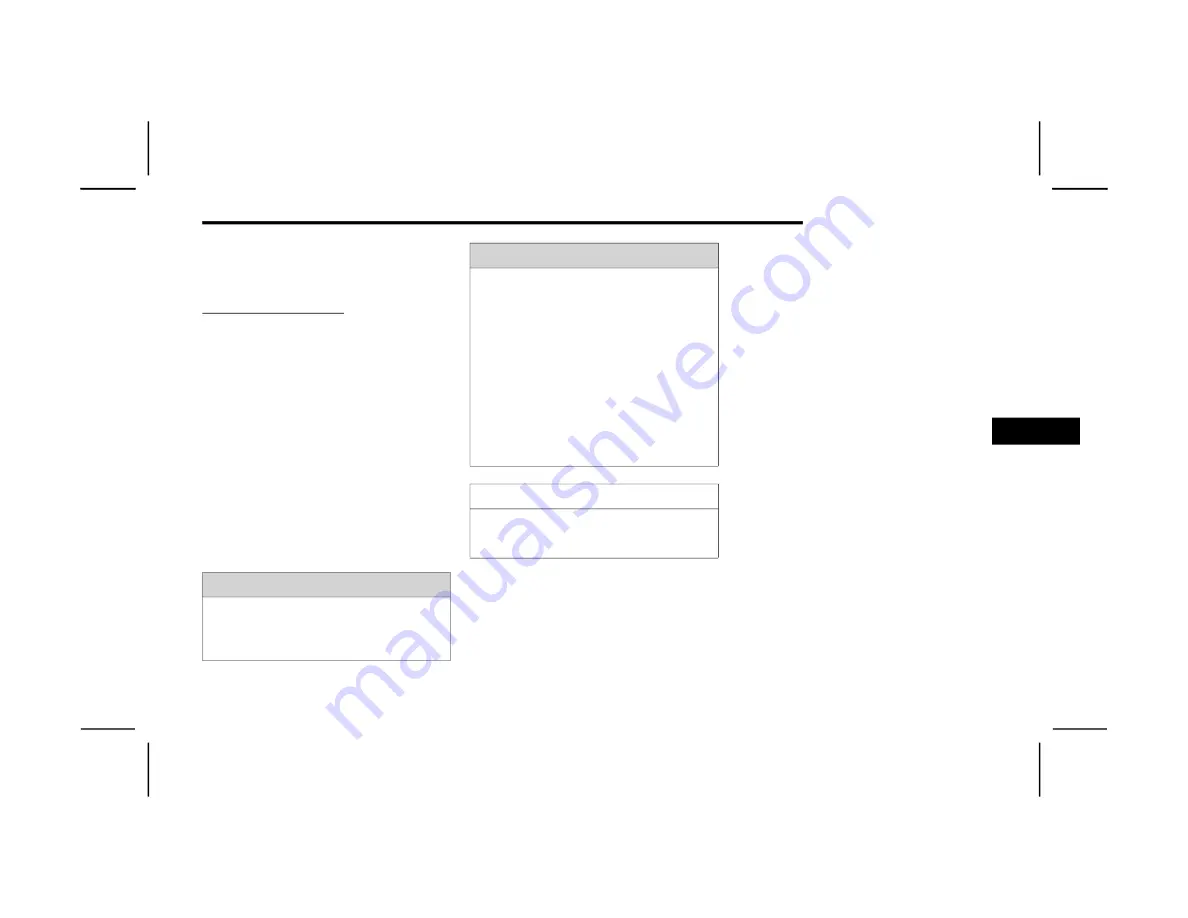
STARTING AND OPERATING
169
(Continued)
The message “AutoPark Not Engaged” will be
displayed in the instrument cluster. A warning
chime will continue until you shift the vehicle into
PARK or the driver’s door is closed.
ALWAYS DO A VISUAL CHECK that your vehicle is in
PARK by looking for the "P" in the Instrument
Cluster Display and near the gear selector. As an
added precaution, always apply the parking brake
when exiting the vehicle.
I
F
E
NGINE
F
AILS
T
O
S
TART
If the engine fails to start after you have followed
the “Normal Starting” procedure, it may be
flooded. Push the accelerator pedal all the way to
the floor and hold it there while the engine is
cranking. This should clear any excess fuel in case
the engine is flooded.
The starter motor will engage automatically, run for
10 seconds, and then disengage. Once this occurs,
release the accelerator pedal and the brake pedal,
wait 10 to 15 seconds, then repeat the “Normal
Starting” procedure.
If the engine has been flooded, it may start to run,
but not have enough power to continue running
when the ignition key is released. If this occurs,
continue cranking with the accelerator pedal
pushed all the way to the floor. Release the
accelerator pedal and the ignition key once the
engine is running smoothly.
If the engine shows no sign of starting after a 10
second period of engine cranking with the
accelerator pedal held to the floor, wait 10 to 15
seconds, then repeat the “Normal Starting”
procedure.
C
OLD
W
EATHER
O
PERATION
(B
ELOW
–22°F O
R
−30°C)
To ensure reliable starting at these temperatures,
the use of an externally powered electric engine
block heater (available from an authorized dealer)
is recommended.
A
FTER
S
TARTING
The idle speed is controlled automatically, and it
will decrease as the engine warms up.
ENGINE BLOCK HEATER — IF EQUIPPED
The engine block heater warms the engine, and
permits quicker starts in cold weather. Connect the
cord to a standard 110-115 Volt AC electrical
outlet with a grounded, three-wire extension cord.
The engine block heater cord is routed under the
hood on the passenger side of the vehicle near the
right head lamp assembly. It is located between
the front grill and the radiator, but underneath the
black upper seal.
WARNING!
Never pour fuel or other flammable liquid into
the throttle body air inlet opening in an
attempt to start the vehicle. This could result
in a flash fire causing serious personal injury.
Do not attempt to push or tow your vehicle to
get it started. Vehicles equipped with an auto
-
matic transmission cannot be started this
way. Unburned fuel could enter the catalytic
converter and once the engine has started,
ignite and damage the converter and vehicle.
If the vehicle has a discharged battery,
booster cables may be used to obtain a start
from a booster battery or the battery in
another vehicle. This type of start can be
dangerous if done improperly. Refer to “Jump
Starting Procedure” in “In Case Of Emergency”
for further information.
CAUTION!
To prevent damage to the starter, do not crank
the engine for more than 10 seconds at a time.
Wait 10 to 15 seconds before trying again.
WARNING!
5
20_DS_OM_EN_USC_t.book Page 169








